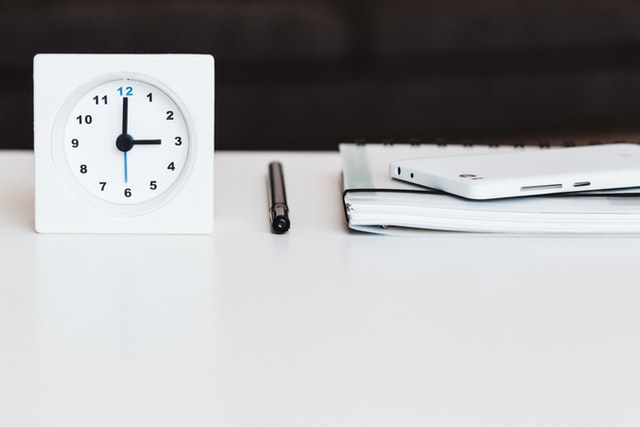“Work expands so as to fill the time available for its completion.” – Parkinson’s law.
We all fight against different forms of procrastination. The honest truth is that the work will not get completed if we do not have a deadline in front of us. Whether that deadline is made by someone else or by us honestly, it really doesn’t matter. Highly productive people set their goals, create their own deadlines, and move forward without getting stuck in procrastination.
I have found this to be true in my own work-from-home experience. Managing myself requires that I set my own deadlines. Procrastination haunts all of us, what we do with it makes the difference.
Timers can be used for many types of work and tasks. They can work as reminders, help us focus, and keep us from distraction. I use a variety of timers throughout my day. Here I will share how I apply these ideas to my writing days.
See this article for how I use timers in my teaching: Using Timers in Homeschooling
Why I use timers –
Parkinson’s Law (time will stretch to the time allotted)
“Parkinson’s law states this: “Work expands so as to fill the time available for its completion.” Essentially the more time you have to complete something, the longer it will take you to finish it. And the less time you have to complete your goal, the more likely it is that you’ll complete it in proposed time. But if a goal or a task does not have a specific deadline set, it will most likely never get done.”
YouTube video: Parkinson’s Law – Manage Your Time More Effectively.
In my experience working from home, I have definitely applied this rule of productivity. While most work has a minimum amount of time to get completed, there are very few maximums.
Most of us can stretch work out to the full amount of time given. Even a 30-minute task can easily take over an hour. (Especially if I get distracted in research online or checking email.)
With the guidance and encouragement of timers, I can get more work done in a shorter amount of time.
It is one of my favorite productivity secrets.
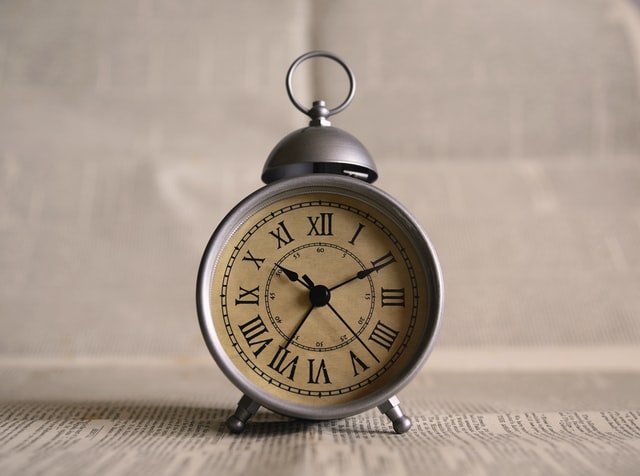
Ways that I use different timers in my Writing Work
Soft End Timers (sand timers):
These timers give you a helpful way to get started.
I find if I tell myself to work for just “10 minutes” (or whatever the pre-set time is). Knowing I can stop helps me get into the groove. The beauty of these timers is that they are not obvious when they are finished so I keep working.
The initial frustration is moved past and work gets done. Usually for longer than what the timer was set for. My requirement for myself is that I work diligently until the sand is gone and then I can stop if I really want to.
- Tasks that work well for this type of timer are:
- open-ended tasks that feel complicated to start
- writing – working on drafts when I feel like I have nothing to say
- Morning Pages – journaling, writing out ideas, creative prompts
- Brain Dumping – listing out all the random stuff held in my head
- business work – answering emails, blog SEO work, tags, and backend work on posts
- Soft End Timers that have worked for us:
- My favorite resource for these is Miller Pads and Paper. They have timers ranging from a 30 sec., to a few minutes, to 10 minutes.
- Ikea has hour glass sand timers that have an antique ascetic.

Short sprint timers / individual timers:
There are 2 types I use to keep focused.
Ticking – The quiet ticking noise reminds me to stay focused. And the ding signals that I should be done. I try to use it as a gentle reminder to keep working.
Silent – This timer is characterized by its short length (less than an hour) and beep or ding at the end of the chosen time. I use these to remind me to switch to the next activity.
This is also known as the Pomodoro Timer and Technique that knowledge workers use to stay focused.
- Tasks that work well for this type of timer are:
- Anything that I want to have a hard stop or a time limit to that qualifies as highly distracting for me.
- social media
- checking stats
- making Instagram posts in Canva – I can easily waste an hour on this.
- replying to emails
- formatting and editing – It will never be perfect. There will always be mistakes. Get it completed and to a “finished state” and then push post.
- Done is better than perfect.
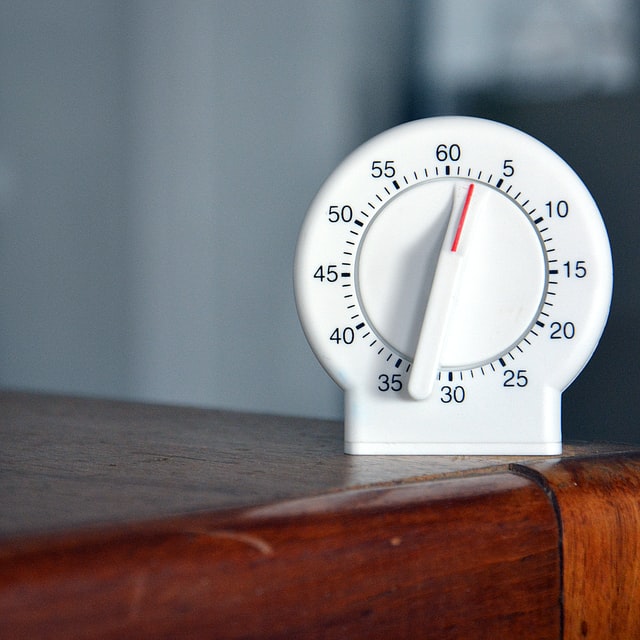
Ticking Timers:
- Red Dollar 100% Mechanical Kitchen Timer
- Cartoon Owl Mechanical Timers 60 Minutes Kitchen Cooking Timer
- or just a basic kitchen timer: Colortrak 60 Minute Wind Up Timer
Photo by Marcelo Leal on Unsplash
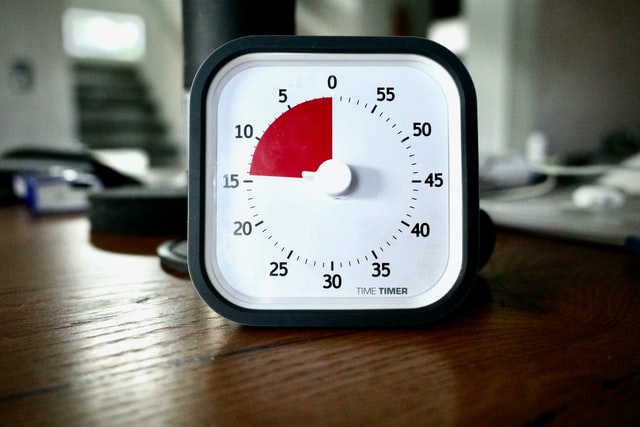
Silent Timers:
- Visual timers are very helpful to easily show how much time is left. Here are 2 that we use:
- mooas Cube Timer on Amazon – this one has 4 Pre-set Times: 5, 10, 20, 30 min.
Photo by Ralph Hutter on Unsplash
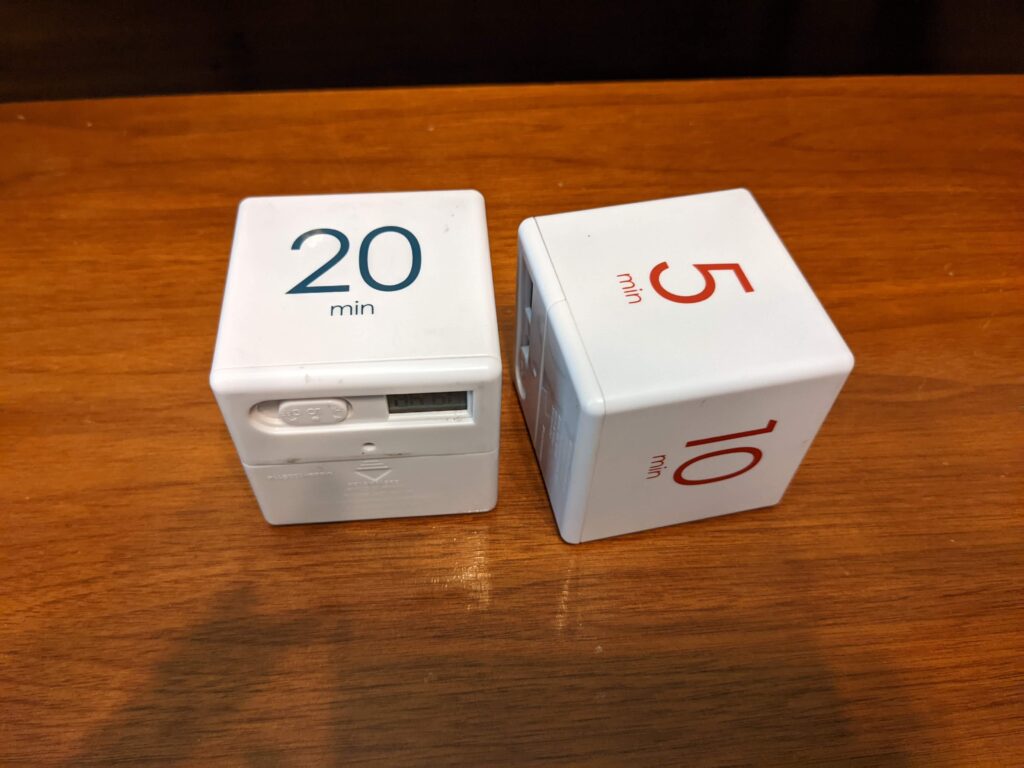

Alarms:
These are for the hard edges of my schedule (or for reminders).
Alarms can help you start or stop when you have other scheduled events. They can remind you of a routine to follow. Or of a task to be done at a certain time. After you set the alarm you can forget about it.
I use alarms often on my phone for all kinds of reminders and hard edges of my daily schedule.
- Tasks that work well for this type of timer are:
- time to end my early morning writing
- when to eat lunch
- a reminder for a Zoom meeting or class
- a specific time to get ready to leave
- Alarms that have worked for us:
- my phone app
- Google home
- old-fashioned alarm clocks
- alarms on my watch- set for starting routines (more about morning routines here)
Questions for you:
- What do you use timers for?
- Do you expect your brain to remember all the routines or do you set alarms for your future self?
- How could timers help your work-from-home day?
- What can you do to slowly include timers in your daily routines?
- What areas can you include timers to increase productivity?
(see this article for more ideas: How to Be Kind to my Future Self)
I have found that my time spent working is easier to control. I am often more productive. I can get more work done in a shorter amount of time. I use these timer tools for encouragement and guidance.
Timers can be used for many types of work and tasks. They can work as reminders, help us focus, and keep us from distraction. I use a variety of timers throughout my day.
See this article for how I use timers in my teaching: Using Timers in Homeschooling
I hope that this has been helpful for you. I would love to hear how timers are working in your day.
Have a beautiful work day! – April

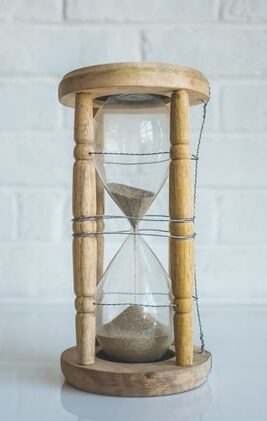
Photos by Mille Sanders / freestocks / Ralph Hutter / Ales Krivec / Corinne Kutz / Kenny Eliason and others on Unsplash
